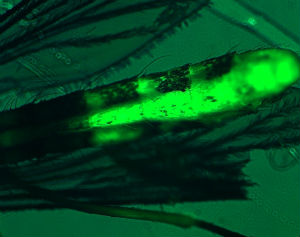Plastic pollution hitchhiking into the skies inside flying insects
19 September 2018

Plastic has found a previously unknown pathway to pollute the environment and enter the food chain, scientists have discovered.
A new study at the University of Reading found tiny fragments of plastic are getting inside flying insects that lay their eggs in water, as they are able to transfer from the larvae to the adult form.
The scientists found that microplastics consumed by larvae crucially remain in the mosquito through metamorphosis to a non-feeding pupa and then adults. Flying insects like these are eaten by birds and bats, providing a potential new pathway for plastics to enter the food chain.
"It is a shocking reality that plastic is contaminating almost every corner of the environment and its ecosystems" - Professor Amanda Callaghan, University of Reading
Professor Amanda Callaghan, biological scientist at the University of Reading and lead author, said: “Much recent attention has been given to the plastics polluting our oceans, but this research reveals it is also in our skies.
“This is eye opening research, which has shown us for the first time that microplastics are able to navigate several life stages in flying insects, allowing them to contaminate all kinds of living creatures who would not normally be exposed to them. It is a shocking reality that plastic is contaminating almost every corner of the environment and its ecosystems.”
Microplastics can originate from plastic pollution, which takes hundreds of years to break down in the environment, and have been found to be widespread in oceans and freshwater all over the world. They are also released directly into waste water as tiny beads in many cosmetic products. These are eaten by aquatic organisms and transfer via the food chain into fish and other creatures.
The new study, published in Biology Letters, shows for the first time that microplastics can be transmitted between life stages of creatures that live in water before moving into a terrestrial environment.
PhD student Rana Al-Jaibachi fed fluorescent plastic microbeads to mosquito larvae and monitored their fate through their life cycle. She used microscopes to examine whether the microplastics had transferred from feeding larval stages to the non-feeding pupal stage and on into the adult insect.
Full reference:
Al-Jaibachi, R., Cuthbert, R., Callaghan, A. (2018); ‘Up and away: ontogenic transference as a pathway for aerial dispersal of microplastics.’; Biology Letters; doi: 10.1098/rsbl.2018.0479
